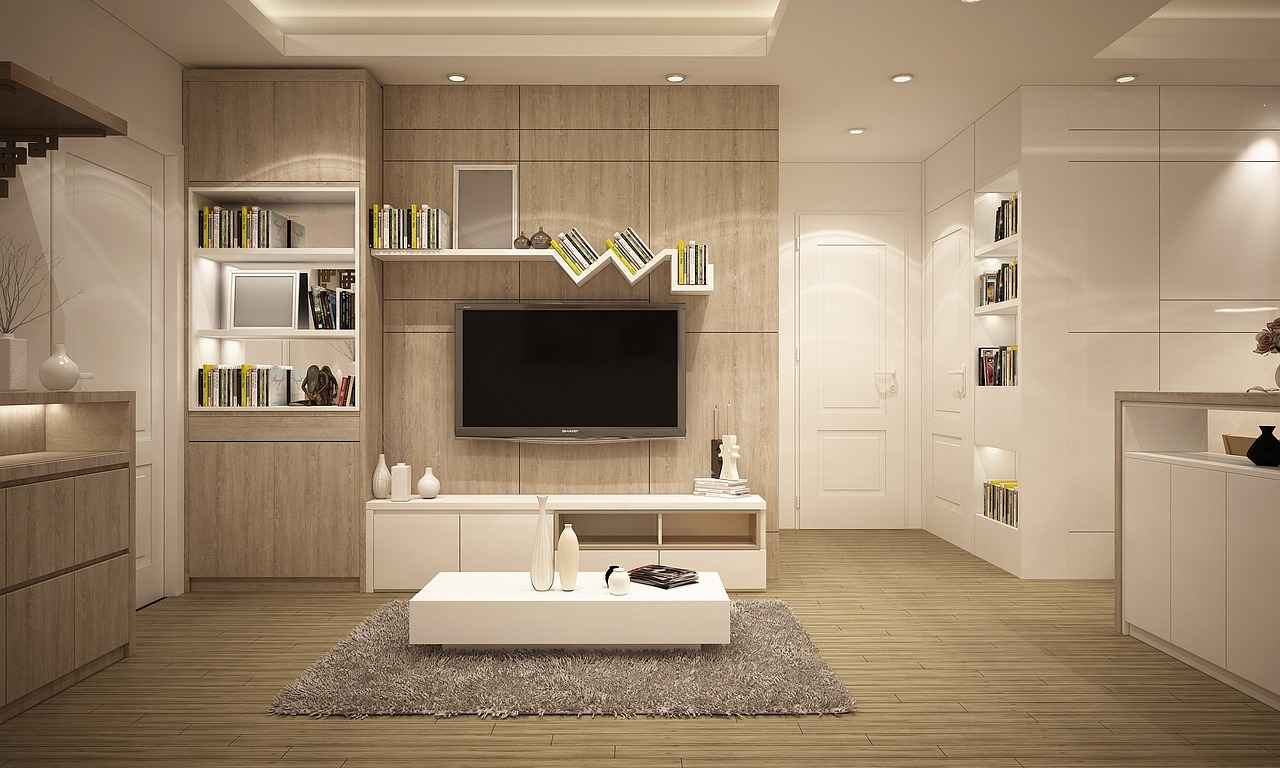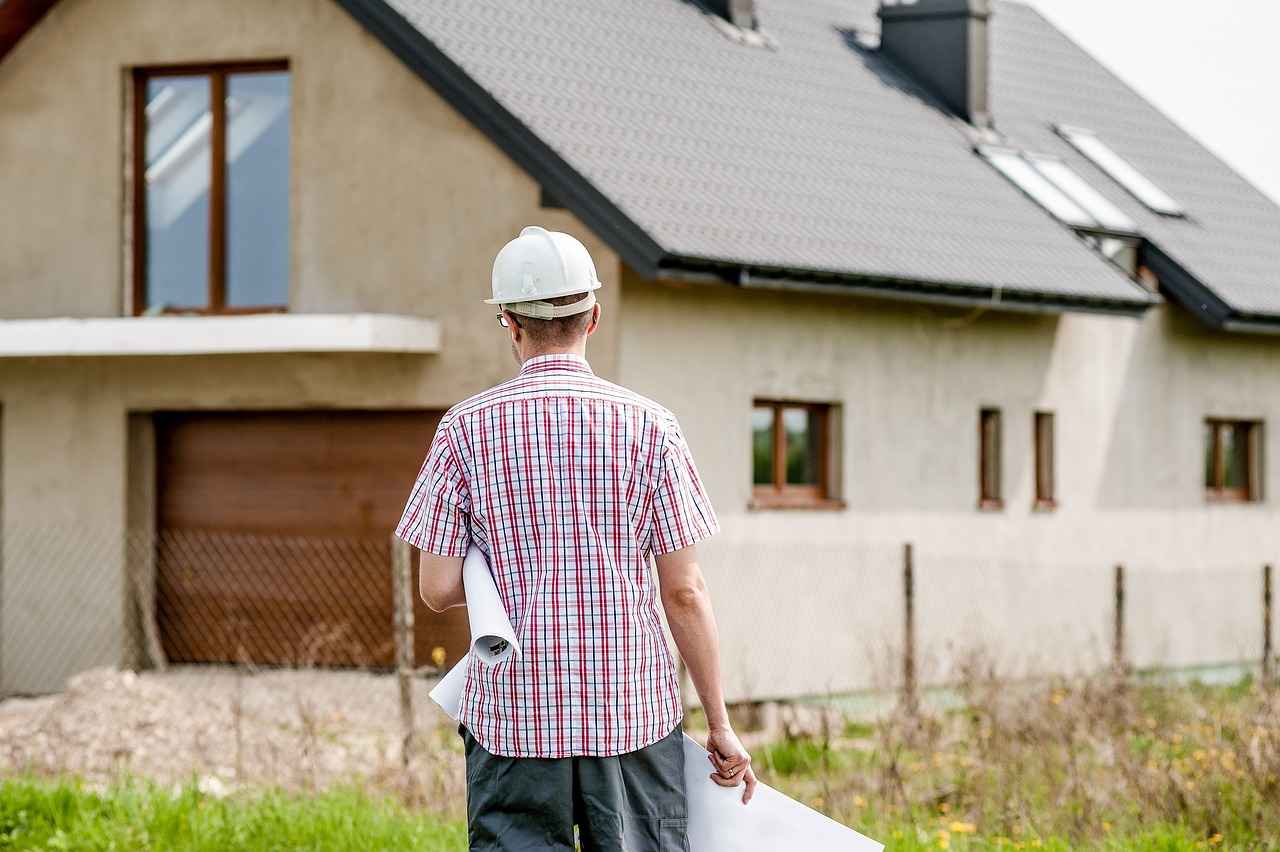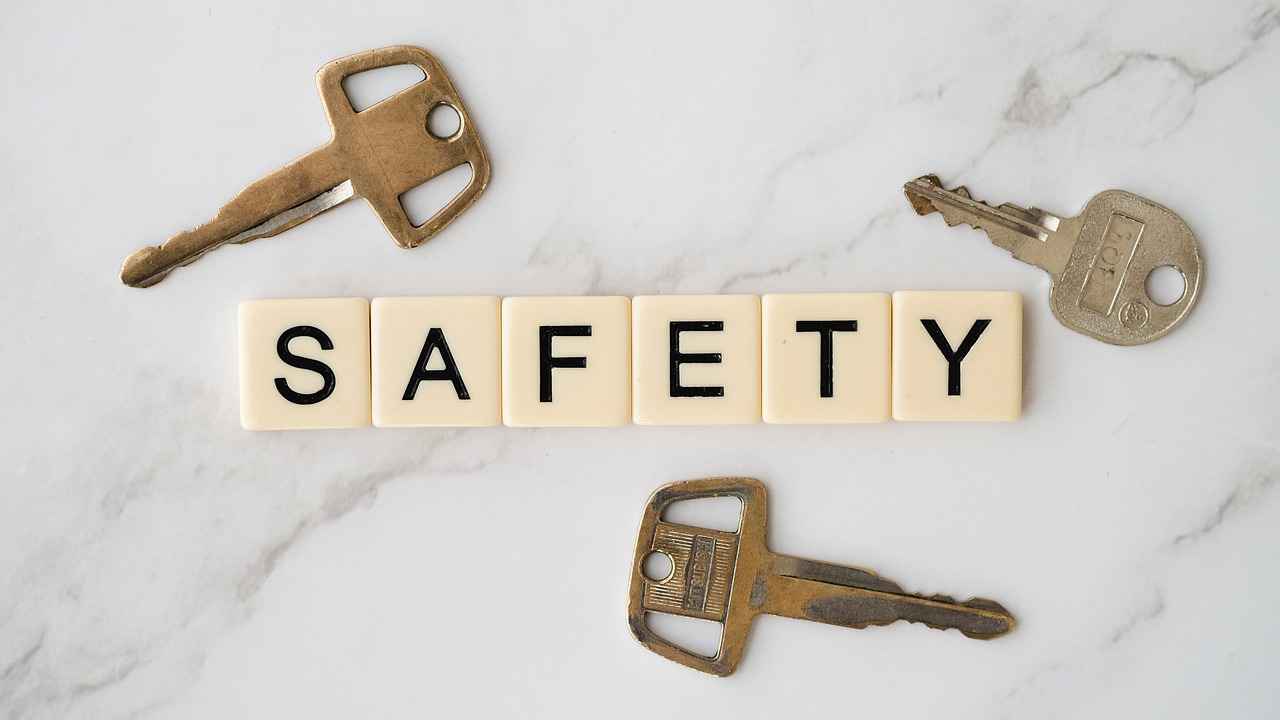This article provides a comprehensive guide on establishing a fully integrated smart home system, including essential components, setup processes, and practical tips to enhance your living space.
Understanding Smart Home Technology
Smart home technology revolutionizes the way we interact with our living spaces. By utilizing devices that can communicate with each other and be controlled remotely, homeowners can enhance convenience, security, and energy efficiency. Key concepts include:
- Devices: Smart lights, thermostats, cameras, and appliances.
- Automation: Programming devices to perform tasks automatically.
- Connectivity: Using Wi-Fi, Bluetooth, or Zigbee for device integration.
Choosing the Right Smart Home Hub
Selecting the right hub is crucial for seamless integration of your smart home devices. A hub acts as the central point of control, allowing different devices to communicate effectively. Consider the following:
- Compatibility: Ensure the hub supports your devices.
- Features: Look for additional functionalities like voice control or automation capabilities.
Essential Smart Home Devices
To create a fully functional smart home, consider incorporating these essential devices:
- Smart Lighting: Adjust brightness and color remotely for ambiance.
- Smart Thermostats: Optimize heating and cooling based on your habits.
- Security Systems: Monitor your home with cameras and alarms.
Automating Your Smart Home
Automation can significantly enhance your smart home experience. By creating routines, you can set multiple devices to operate together. For instance, a morning routine might include:
- Turning on lights.
- Adjusting the thermostat.
- Starting your coffee maker.
Ensuring Security in Your Smart Home
Security is paramount in a smart home setup. Implement these best practices:
- Secure Your Network: Use strong passwords and enable network encryption.
- Choose Secure Devices: Invest in devices with robust security features.
Maintaining Your Smart Home System
Regular maintenance is vital for optimal performance. Keep your devices updated and troubleshoot common issues promptly. This will ensure your smart home remains efficient and effective.
Conclusion: Embracing the Smart Home Lifestyle
In summary, a fully integrated smart home system can enhance your living experience dramatically. By understanding the technology, choosing the right devices, and implementing effective security measures, you can enjoy the benefits of a modern smart home.

Understanding Smart Home Technology
In today’s fast-paced world, smart home technology has emerged as a transformative force, enhancing convenience, security, and energy efficiency in our living spaces. This article delves into the fundamental concepts of smart home technology, focusing on the devices, automation, and connectivity options that make a smart home both efficient and user-friendly.
What is Smart Home Technology?
Smart home technology refers to the integration of devices and systems that can be controlled remotely, often via a smartphone or voice command. This technology encompasses a wide range of devices, including:
- Smart Lights: These can be controlled remotely and programmed to adjust based on your routine.
- Smart Thermostats: Devices that learn your preferences and help optimize energy usage.
- Smart Security Systems: Allow real-time monitoring and alerts for enhanced safety.
Automation in Smart Homes
One of the standout features of smart home technology is automation. This allows multiple devices to work in harmony, creating a seamless living experience. For instance:
- Routines: You can set routines that automate actions, like turning off lights and locking doors at bedtime.
- Scenes: Create scenes that adjust lighting, temperature, and music for specific activities, such as movie nights.
Connectivity Options
Smart devices connect through various protocols, such as Wi-Fi, Zigbee, and Z-Wave. Understanding these options is crucial for ensuring compatibility and optimal performance. Wi-Fi is widely used for its range and speed, while Zigbee and Z-Wave are known for their low power consumption and reliable mesh networking capabilities.
In conclusion, smart home technology is revolutionizing how we interact with our living spaces. By understanding the devices, automation techniques, and connectivity options available, you can create a smart home that is not only efficient but also tailored to your lifestyle.

Choosing the Right Smart Home Hub
When it comes to creating a seamless smart home experience, selecting the right smart home hub is essential. A smart home hub acts as the central point of communication for various smart devices, ensuring they work together harmoniously. With numerous options available on the market, understanding the different types of hubs and their compatibility with various devices is crucial for optimizing your smart home setup.
Types of Smart Home Hubs
- Cloud-Based Hubs: These hubs rely on internet connectivity to control devices. They often offer extensive compatibility with various brands but require a stable internet connection.
- Local Hubs: Operating without internet dependency, local hubs provide faster response times and enhanced security. However, they may have limited compatibility with certain devices.
- Voice-Activated Hubs: Devices like Amazon Echo and Google Nest serve dual purposes as both smart speakers and hubs, allowing users to control their smart home via voice commands.
Compatibility Considerations
When choosing a hub, it’s vital to consider which devices you plan to integrate. Some hubs are designed to work with a wide range of devices, while others may only support specific brands or protocols. For instance, Samsung SmartThings is known for its versatility, supporting Zigbee, Z-Wave, and Wi-Fi devices, making it a popular choice among users looking for extensive compatibility.
Future-Proofing Your Smart Home
As technology evolves, so do smart home devices. Opting for a hub that regularly receives updates and supports new protocols can help ensure your system remains relevant and functional. Researching user reviews and expert recommendations can provide valuable insights into which hubs are best suited for future expansion.
In conclusion, selecting the right smart home hub is a foundational step in creating an integrated smart home system. By understanding the types of hubs available and their compatibility with various devices, you can make an informed decision that enhances your smart home experience.
Popular Smart Home Hubs
In today’s rapidly evolving technological landscape, smart home hubs play a pivotal role in creating an integrated and efficient living environment. These hubs act as the central command for various smart devices, allowing users to control everything from lighting to security systems seamlessly. Below, we explore some of the most popular smart home hubs available, detailing their features, advantages, and potential drawbacks to assist you in making an informed decision.
| Smart Home Hub | Features | Pros | Cons |
|---|---|---|---|
| Amazon Echo | Voice control, Alexa integration, smart home device compatibility |
|
|
| Google Nest Hub | Voice control, Google Assistant, touchscreen display |
|
|
| Samsung SmartThings | Supports a wide range of devices, automation features |
|
|
In conclusion, selecting the right smart home hub is essential for creating a cohesive and functional smart home ecosystem. Each hub has its unique strengths and weaknesses, so it’s crucial to assess your specific needs and preferences before making a choice. By understanding the features, pros, and cons of these leading smart home hubs, you can enhance your smart home experience and enjoy the convenience of a fully integrated system.
Amazon Echo and Google Nest
Amazon Echo and Google Nest are at the forefront of smart home technology, serving as pivotal hubs that enhance your smart home experience. These devices not only provide convenience but also integrate various smart home products into a cohesive system.
Both Amazon Echo and Google Nest offer voice-activated assistants, Alexa and Google Assistant, respectively. This feature allows users to control their smart devices hands-free, creating a seamless interaction within the home. For instance, you can simply say, “Turn on the lights” or “Set the thermostat to 72 degrees,” making everyday tasks more manageable.
When it comes to compatibility, both hubs support a wide range of smart devices. Amazon Echo is particularly known for its extensive compatibility with devices from various manufacturers, while Google Nest excels in integrating with Google services and products. This diversity allows users to tailor their smart home systems according to their preferences.
Another significant advantage of these hubs is their ability to create automated routines. For example, you can program your Amazon Echo to turn off all lights and lock the doors when you say, “Goodnight.” Similarly, Google Nest can help you establish morning routines that adjust the thermostat and play your favorite news brief as you wake up.
Moreover, both hubs have robust security features. They offer options to monitor your home through compatible security cameras and sensors, ensuring peace of mind when you are away. With features like two-factor authentication and regular software updates, users can feel confident in the security of their smart home ecosystem.
In conclusion, whether you choose Amazon Echo or Google Nest, both devices significantly enhance your smart home experience. Their capabilities in voice control, device integration, automation, and security make them essential components in creating a fully connected and efficient living space.
Samsung SmartThings
is increasingly recognized as a versatile and powerful hub for smart home enthusiasts. This platform supports a myriad of devices, making it an ideal choice for those looking to create a fully integrated smart home experience. With its user-friendly interface and extensive compatibility, SmartThings allows users to manage and automate their devices seamlessly.
One of the standout features of Samsung SmartThings is its ability to connect to a diverse range of devices, including smart lights, thermostats, cameras, and even appliances. This extensive compatibility ensures that users can incorporate their existing devices into the SmartThings ecosystem without needing to replace them. The hub supports both Zigbee and Z-Wave protocols, which are widely used in smart home technology, further enhancing its versatility.
In addition to device compatibility, SmartThings offers unique automation features that can significantly enhance the functionality of your smart home. Users can create customized routines and automations that allow devices to work together based on specific triggers. For instance, you can set your lights to turn on automatically when you arrive home or have your thermostat adjust the temperature when you leave for work. This not only improves convenience but also helps in optimizing energy usage.
Moreover, SmartThings integrates easily with voice assistants like Amazon Alexa and Google Assistant, allowing for hands-free control of your smart devices. This feature enhances the overall user experience by providing an intuitive way to interact with your home technology.
In conclusion, Samsung SmartThings stands out as a robust hub option for anyone looking to dive into the world of smart home technology. With its broad device support and advanced automation capabilities, it empowers users to create a personalized and efficient smart home environment.
Connecting Smart Devices
is a crucial step in creating a fully functional smart home ecosystem. By integrating various smart devices with your hub, you can achieve seamless communication and automation, making your living space more efficient and enjoyable.
To begin the process of connecting your smart devices, follow these essential steps:
- Step 1: Choose Compatible Devices – Ensure that the devices you intend to connect are compatible with your chosen smart home hub. Most hubs support a range of devices, but checking compatibility can save you time and frustration.
- Step 2: Set Up Your Hub – Before connecting devices, make sure your hub is properly set up. This typically involves downloading the hub’s app, creating an account, and connecting the hub to your home Wi-Fi network.
- Step 3: Add Devices – Using the hub’s app, navigate to the ‘Add Device’ section. Follow the on-screen instructions to put your smart device into pairing mode. This often involves pressing a specific button or following a sequence of actions.
- Step 4: Configure Settings – Once connected, customize the settings for each device according to your preferences. This may include naming the devices, setting schedules, or creating automation routines.
- Step 5: Test Integration – After all devices are connected, test their functionality. Ensure that they respond to commands from the hub and can work together in automation scenarios.
By following these steps, you can ensure that your smart home devices work harmoniously together. This connectivity not only enhances convenience but also allows for advanced automation, making your daily routines smoother.
In conclusion, connecting smart devices to your hub is a pivotal step toward achieving a cohesive smart home environment. With the right setup and configuration, you can unlock the full potential of your smart devices, leading to a more efficient and enjoyable living experience.

Essential Smart Home Devices
As technology continues to evolve, smart home devices have become essential for modern living. These devices not only enhance convenience but also improve energy efficiency and security within your home. Below, we will explore some of the key smart home devices that can significantly transform your living space.
- Smart Lights
Smart lighting solutions allow you to control the brightness and color of your lights remotely, creating the perfect ambiance for any occasion. With options like Philips Hue and LIFX, you can schedule lighting to match your routine, enhance security with automated lighting, and even sync your lights with music or movies for an immersive experience.
- Smart Thermostats
Devices like the Nest Learning Thermostat and Ecobee SmartThermostat learn your habits and adjust the temperature accordingly. This not only maximizes comfort but also helps reduce energy bills by optimizing heating and cooling schedules based on your lifestyle.
- Smart Security Systems
Home security is paramount, and smart security systems such as Ring and Arlo offer peace of mind. These systems include features like video surveillance, motion detection, and remote access, allowing homeowners to monitor their property from anywhere. Additionally, they can integrate with other smart devices for enhanced security.
- Smart Plugs
Smart plugs, like those from TP-Link and Wemo, turn any regular appliance into a smart device. You can control lamps, fans, and other electronics remotely or set schedules for when they should be on or off, promoting energy efficiency and convenience.
- Smart Speakers
Devices such as Amazon Echo and Google Nest Hub serve as control centers for your smart home. They allow for voice commands to manage other devices, play music, provide weather updates, and more, creating a seamless smart home experience.
Incorporating these essential smart home devices can significantly enhance your living space, making it more comfortable, secure, and energy-efficient. As you explore options, consider your specific needs and how these devices can integrate into your daily life.
Smart Lighting Solutions
have revolutionized the way we illuminate our homes, offering a multitude of benefits that enhance both functionality and aesthetics. This section delves into the advantages of implementing smart lighting systems, highlighting their energy efficiency, convenience, and the ability to create a customizable ambiance for any setting.
- Energy Efficiency: Smart lighting solutions utilize LED technology, which consumes significantly less energy compared to traditional incandescent bulbs. By integrating smart bulbs with motion sensors and timers, homeowners can ensure that lights are only on when needed. This not only reduces electricity bills but also contributes to a more sustainable environment.
- Convenience: The convenience offered by smart lighting is unparalleled. Homeowners can control their lighting systems remotely through smartphone applications or voice commands via smart assistants like Amazon Alexa or Google Assistant. This means you can adjust your home’s lighting from anywhere, whether you’re lounging on the couch or miles away.
- Customizable Ambiance: Smart lighting systems allow for the creation of personalized lighting scenes tailored to different activities or moods. Whether you want bright, energizing light for a workout or soft, warm tones for a cozy evening, smart lights can be adjusted with just a few taps or voice commands. This flexibility enhances the overall atmosphere of your living space.
- Enhanced Security: Smart lighting can also boost home security. By programming lights to turn on and off at specific times, homeowners can create the illusion of occupancy, deterring potential intruders. Additionally, outdoor smart lights can be triggered by motion, providing an extra layer of protection.
- Integration with Other Smart Devices: Smart lighting solutions can easily integrate with other smart home devices, creating a cohesive ecosystem. For example, lights can be programmed to turn on when a smart security camera detects movement or when a smart thermostat adjusts the temperature.
In conclusion, adopting smart lighting solutions not only enhances the aesthetic appeal of your home but also promotes energy efficiency and security. With the ability to customize ambiance and control lighting conveniently, these systems represent a significant step forward in modern home technology.
Smart Thermostats
have emerged as a pivotal component in modern smart home technology, significantly enhancing both energy efficiency and user comfort. By learning your unique heating and cooling preferences, these devices adapt to your lifestyle, ensuring optimal temperature settings while minimizing energy waste.
One of the primary benefits of smart thermostats is their ability to learn your habits. Over time, they analyze your daily routines, adjusting the temperature automatically based on when you are home or away. For instance, if you typically leave for work at 8 AM, a smart thermostat can lower the heating or cooling just before you leave, allowing you to save on energy costs without sacrificing comfort.
Moreover, many smart thermostats come equipped with sophisticated sensors that can detect when rooms are occupied or unoccupied. This feature allows the thermostat to optimize energy usage further by adjusting temperatures only in areas where people are present, thus avoiding unnecessary heating or cooling in empty spaces.
Integration with mobile apps is another significant advantage. Users can control their thermostats remotely, allowing them to adjust settings from anywhere, whether at work or on vacation. This level of convenience not only enhances comfort but also empowers users to make energy-efficient decisions in real-time.
Additionally, smart thermostats provide valuable insights into your energy consumption patterns. By analyzing this data, users can identify trends and make informed choices to reduce their energy bills. Some models even offer energy-saving tips and reminders, promoting a more sustainable lifestyle.
In conclusion, smart thermostats are not just about convenience; they represent a significant advancement in energy management technology. By learning your preferences and adapting to your lifestyle, they optimize energy usage while ensuring that your home remains comfortable. Embracing such technology can lead to both financial savings and a reduced environmental footprint.

Automating Your Smart Home
is an essential step in enhancing the functionality and efficiency of your living environment. By leveraging automation techniques, you can significantly streamline daily tasks, making your home smarter and more responsive to your needs.
Automation in a smart home involves the integration of various devices and systems to work together seamlessly. This can include everything from lighting and heating to security systems and entertainment devices. By automating these processes, you can create a home that not only responds to your commands but also anticipates your needs.
One of the most effective ways to implement automation is by creating routines. Routines allow you to program multiple devices to perform specific actions at designated times or in response to certain triggers. For instance, you might set up a morning routine that gradually brightens your smart lights, adjusts the thermostat, and starts your coffee maker—all at the same time. This not only enhances convenience but also helps in saving energy.
Another significant aspect of automation is the use of scenes. Scenes enable you to group devices together for particular activities. For example, you can create a “Movie Night” scene that dims the lights, lowers the blinds, and turns on your entertainment system with a single command. This level of customization allows for a tailored experience that fits your lifestyle perfectly.
Furthermore, integrating voice control into your smart home system can elevate convenience to new heights. With voice assistants like Amazon Alexa or Google Assistant, you can control your devices hands-free. Simply speaking a command can turn on lights, adjust the thermostat, or even lock your doors, making daily interactions with your home more intuitive.
In summary, automating your smart home can transform your living space into a highly efficient and user-friendly environment. By utilizing routines, scenes, and voice control, you can streamline daily tasks and enhance the overall functionality of your smart home system. Embrace these automation techniques to enjoy a more connected and convenient lifestyle.
Creating Routines and Scenes
In the realm of smart home technology, is a pivotal aspect that enhances the functionality and convenience of your living space. By establishing these automated sequences, you can ensure that multiple devices work together seamlessly for specific activities, thereby improving your overall smart home experience.
What are Routines and Scenes?
Routines are predefined actions that can be triggered by a single command or event, while scenes allow you to set multiple devices to a specific state at once. For example, a “Movie Night” scene could dim the lights, lower the shades, and turn on the television, all with a single command.
Steps to Create Routines
- Choose Your Hub: Ensure you have a compatible smart home hub that supports routine creation.
- Select Devices: Identify which devices you want to include in your routine. This could range from lights and thermostats to smart speakers and security systems.
- Set Triggers: Determine what will trigger the routine. This can be a specific time of day, a voice command, or even the status of another device.
- Define Actions: Specify what actions each device should perform when the routine is triggered.
Creating Scenes for Enhanced Ambiance
Scenes can be particularly useful for setting the mood in your home. To create a scene:
- Choose a Scene Name: Give your scene a memorable name that reflects its purpose.
- Adjust Device Settings: Manually set the desired state for each device included in the scene.
- Save and Activate: Save your scene and activate it through your smart home app or using a voice command.
By effectively utilizing routines and scenes, you can transform your home into a more responsive and personalized environment. Whether you’re entertaining guests or simply winding down after a long day, these automated settings allow for a tailored experience that enhances your lifestyle.
Conclusion
In conclusion, creating routines and scenes in your smart home not only simplifies daily tasks but also elevates your living experience. Embrace the convenience and efficiency of smart technology by integrating these features into your home automation setup.
Voice Control Integration
has revolutionized the way we interact with our smart home devices, making daily tasks not only easier but also more intuitive. By leveraging voice recognition technology, users can control a variety of devices using simple voice commands, thus enhancing convenience and accessibility in their homes.
Imagine walking into your home after a long day and simply saying, “Turn on the lights” or “Set the thermostat to 72 degrees”. With voice control, these actions can be executed seamlessly without the need to fumble with apps or switches. This hands-free approach is particularly beneficial for individuals with mobility challenges or those who are multitasking.
Moreover, voice control systems are designed to understand natural language, allowing for more complex commands. For instance, you can say, “Goodnight,” and your smart home can respond by turning off all the lights, locking the doors, and adjusting the thermostat, all in one go. This level of automation not only saves time but also enhances security and energy efficiency.
Integrating voice control into your smart home system typically involves connecting your devices to a central hub, such as the Amazon Echo or Google Nest. These hubs act as the brain of your smart home, processing voice commands and communicating with connected devices. Setting up voice control is usually straightforward, requiring minimal technical skills.
In addition to convenience, voice control can also be customized to suit individual preferences. Users can create specific commands for different scenarios, making their interactions with smart devices more personalized. Furthermore, as voice recognition technology continues to improve, the accuracy and responsiveness of these systems are expected to enhance, making smart home management even more efficient.
In conclusion, is a game-changer for smart home technology. It simplifies interactions, enhances convenience, and provides a level of automation that can significantly improve daily living. As we continue to embrace these advancements, the future of home automation looks brighter than ever.

Ensuring Security in Your Smart Home
In today’s digital age, security is not just a luxury; it is a necessity. As we embrace the convenience of smart home technology, it is crucial to prioritize the protection of our devices and personal data. This section delves into best practices for safeguarding your smart home setup against potential threats.
- Secure Your Network: The foundation of a secure smart home lies in a robust home network. Begin by changing the default passwords on your router and enabling WPA3 encryption if available. Regularly update your router’s firmware to protect against vulnerabilities.
- Use Strong Passwords: For each smart device, create unique and complex passwords. Avoid using easily guessable information, such as birthdays or names. Consider using a password manager to keep track of your credentials securely.
- Enable Two-Factor Authentication: Whenever possible, activate two-factor authentication (2FA) for your devices and accounts. This adds an extra layer of security, requiring a second form of verification in addition to your password.
- Keep Software Updated: Regularly check for firmware updates for all your smart devices. Manufacturers frequently release updates to patch security vulnerabilities. Keeping your devices up to date is critical for maintaining security.
- Monitor Device Activity: Utilize the monitoring features available in your smart home hub. Regularly review the activity logs to detect any unauthorized access or unusual behavior.
- Choose Secure Devices: When purchasing smart devices, research their security features. Look for products that offer end-to-end encryption and have a good reputation for security practices.
By implementing these best practices, you can significantly enhance the security of your smart home, ensuring that your devices and personal information remain safe from potential threats. Remember, a secure smart home is a smart home!
Secure Your Network
Securing your home network is an essential step in protecting your smart devices from potential cyber threats. With the increasing number of connected devices in our homes, a secure network is crucial to prevent unauthorized access and data breaches. This article outlines key steps to enhance your network security.
- Change Default Credentials: Most devices come with default usernames and passwords. Change these immediately to something unique and complex to prevent easy access.
- Use Strong Wi-Fi Encryption: Ensure your Wi-Fi is secured with WPA3 encryption, if available. This is the latest and most secure protocol.
- Set Up a Guest Network: Create a separate guest network for visitors. This keeps your primary network and devices isolated from potential threats.
- Regularly Update Firmware: Keep your router and smart devices updated with the latest firmware. Updates often contain security patches that protect against vulnerabilities.
- Disable WPS: Wi-Fi Protected Setup (WPS) can be a security risk. Disable it to prevent unauthorized access to your network.
- Monitor Connected Devices: Regularly check the list of connected devices on your network. Remove any unfamiliar or unauthorized devices immediately.
- Use a Firewall: Activate your router’s built-in firewall and consider using additional security software to provide an extra layer of protection.
By implementing these steps, you can significantly reduce the risk of cyber threats and ensure that your smart home devices operate safely. Remember, a secure network is the foundation of a secure smart home.
Conclusion: Protecting your home network is not just about safeguarding your devices; it’s about securing your personal information and privacy. Take these essential steps to create a resilient defense against cyber threats.
Choosing Secure Devices
In today’s digital age, ensuring the security of your smart home devices is paramount. With the increasing number of connected devices, it is essential to choose those that come equipped with robust security features. This section will guide you through the key considerations to keep your home safe while enjoying the benefits of smart technology.
- Research the Manufacturer: Before purchasing any smart device, investigate the manufacturer’s reputation regarding security. Look for companies that prioritize security updates and have a history of addressing vulnerabilities promptly.
- Check for Security Certifications: Look for devices that have received certifications such as IoT Security Foundation or UL Cybersecurity. These certifications indicate that the device meets certain security standards.
- Enable Two-Factor Authentication: Choose devices that offer two-factor authentication (2FA). This adds an extra layer of security by requiring a second form of verification when accessing your device.
- Regular Software Updates: Opt for devices that receive regular software updates. These updates often include security patches that protect against the latest threats.
- Strong Passwords: Ensure that any device you choose allows you to set a strong, unique password. Avoid default passwords, as they are often easily compromised.
- Data Encryption: Look for devices that encrypt data both in transit and at rest. This means that your personal information is protected from unauthorized access.
By following these guidelines, you can significantly reduce the risk of cyber threats to your smart home. Investing time in selecting secure devices will not only safeguard your home but also enhance your overall smart home experience. Remember, a secure smart home is a happy smart home!

Maintaining Your Smart Home System
Regular maintenance is vital for ensuring your smart home system operates at its best. Just like any advanced technology, smart home devices require consistent attention to function optimally. Below are some practical tips to keep your smart home system running smoothly and efficiently.
- Perform Regular Software Updates: Keeping your devices updated is crucial. Manufacturers often release updates that fix bugs, enhance security, and introduce new features. Regularly check for updates on your smart home hub and individual devices.
- Backup Your Settings: Create backups of your smart home configurations. This ensures that in case of a malfunction or reset, you can quickly restore your settings without losing valuable customizations.
- Check Device Connectivity: Periodically verify that all devices are connected and communicating with the hub. A simple power cycle or reconfiguration can resolve connectivity issues.
- Inspect Hardware: Take the time to visually inspect your devices for any signs of wear or damage. This includes checking for loose connections, frayed wires, or any physical obstructions that could affect performance.
- Troubleshoot Common Issues: Familiarize yourself with common problems and their solutions. For instance, if a smart bulb isn’t responding, it may need to be reset or re-added to the network.
- Organize Your Network: Ensure your Wi-Fi network is optimized for smart devices. Place your hub in a central location and consider using Wi-Fi extenders if you have a larger home.
By following these maintenance tips, you can extend the lifespan of your smart home devices and enhance their performance. Remember, a well-maintained system not only saves you time and frustration but also maximizes the convenience and comfort that smart home technology offers.
Software Updates and Backups
In today’s rapidly evolving digital landscape, keeping your smart devices updated and backed up is of utmost importance. Regular software updates not only enhance the functionality of your devices but also provide critical security patches that protect your personal information from potential threats.
Firstly, software updates ensure that your devices are equipped with the latest features and improvements. Manufacturers frequently release updates to fix bugs, enhance performance, and introduce new functionalities. By neglecting these updates, you may miss out on significant enhancements that could improve your smart home experience.
- Performance Improvements: Updates often include optimizations that make your devices run more smoothly.
- New Features: Many updates introduce exciting new features that can enhance the usability of your devices.
- Security Enhancements: Perhaps the most critical aspect, updates often address vulnerabilities that could be exploited by cybercriminals.
In addition to updates, backing up your data is essential. Regular backups protect your settings, preferences, and any custom configurations you may have set up. This is particularly important if you ever need to reset a device or if it malfunctions. By having a backup, you can restore your settings quickly and efficiently, minimizing downtime.
To ensure your devices are updated and backed up:1. Enable automatic updates where possible.2. Schedule regular manual checks for updates.3. Use cloud services or external storage for backups.
In conclusion, maintaining updated software and regular backups for your smart devices is crucial for optimal functionality and security. By prioritizing these practices, you can enjoy a seamless and secure smart home experience.
Troubleshooting Common Issues
In the world of smart home technology, encountering issues with your devices is not uncommon. Whether it’s connectivity problems, unresponsive devices, or automation failures, knowing how to troubleshoot these common issues can save you time and frustration. This section aims to provide you with effective strategies to resolve typical problems you may face with your smart devices.
- Device Not Responding: If your smart device is unresponsive, first check its power source. Ensure that it is plugged in or that its batteries are charged. If the device still doesn’t respond, try resetting it by following the manufacturer’s instructions.
- Connectivity Issues: Many smart devices rely on a stable Wi-Fi connection. If you’re experiencing connectivity issues, start by checking your internet connection. Restart your router and ensure that your device is within range of the Wi-Fi signal. If the problem persists, consider moving the device closer to the router or using a Wi-Fi extender.
- Automation Failures: If your automated routines are not functioning as intended, verify that the devices involved are properly connected to your smart home hub. Check the settings of your routines to ensure that all conditions are met for the automation to trigger. Sometimes, a simple reconfiguration can resolve the issue.
- Firmware Updates: Keeping your devices updated is crucial for optimal performance. Regularly check for firmware updates through the device’s app or settings menu. Installing updates can fix bugs and improve functionality.
- Compatibility Issues: Always ensure that your devices are compatible with your smart home hub. Refer to the manufacturer’s specifications and documentation to confirm compatibility before purchasing new devices.
By following these troubleshooting tips, you can effectively address common issues with your smart devices, ensuring a smoother and more enjoyable smart home experience. Remember, regular maintenance and updates are key to keeping your smart home system running efficiently.

Conclusion: Embracing the Smart Home Lifestyle
In today’s fast-paced world, the concept of a fully integrated smart home system is becoming increasingly appealing. As we navigate through the myriad of technological advancements, it is essential to recognize the significant benefits that come with embracing this modern lifestyle. Here are the key takeaways from our exploration of smart home technology:
- Enhanced Convenience: A smart home system allows for seamless control over various devices, enabling you to manage everything from lighting to security with just a few taps on your smartphone or through voice commands.
- Energy Efficiency: Smart devices, such as thermostats and lighting systems, can optimize energy usage, leading to lower utility bills and a reduced carbon footprint.
- Improved Security: With smart security systems, including cameras and alarms, you can monitor your home in real-time, providing peace of mind whether you are at home or away.
- Customization: Smart home technology allows for personalized settings and routines, creating an environment that caters specifically to your lifestyle and preferences.
- Future-Proofing: As technology continues to evolve, investing in a smart home system ensures that your living space remains up-to-date with the latest innovations.
In conclusion, transitioning to a fully integrated smart home system not only enhances your living experience but also aligns with a more sustainable and secure way of life. By embracing these advancements, you are investing in a future where technology seamlessly integrates into your daily routine, making life easier and more enjoyable. Take the leap today and explore the possibilities that a smart home can offer!
Frequently Asked Questions
- What is a smart home system?
A smart home system is a network of devices that are interconnected to enhance convenience, security, and efficiency in your living space. These devices can be controlled remotely via smartphones or voice commands, making everyday tasks easier.
- How do I choose the right smart home hub?
Selecting the right smart home hub depends on the devices you plan to use. Consider compatibility, ease of use, and features. Popular options include Amazon Echo, Google Nest, and Samsung SmartThings, each offering unique advantages.
- Can I automate my smart home devices?
Absolutely! You can create routines and scenes that allow multiple devices to work together seamlessly. For example, you can set up a morning routine that turns on the lights, adjusts the thermostat, and brews coffee all at once!
- How do I ensure the security of my smart home?
To secure your smart home, start by protecting your Wi-Fi network with a strong password. Choose devices with robust security features and keep your software updated to guard against potential vulnerabilities.
- What should I do if my smart device isn’t working?
If a smart device isn’t functioning properly, first check your network connection. Restart the device, and if issues persist, consult the manufacturer’s troubleshooting guide or reset the device to factory settings.













